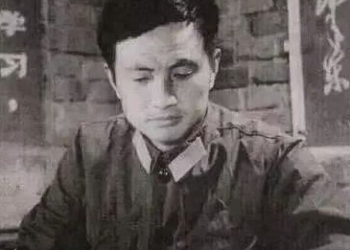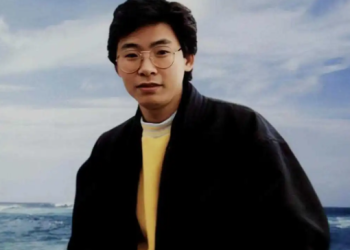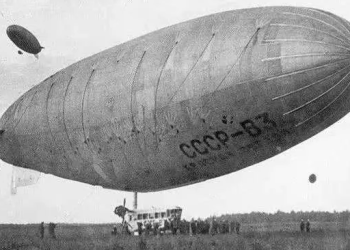In 1977, the National Planning Conference on Natural Science Disciplines was held in Beijing. After 21 years of silence, Jiang Xinsong could finally speak freely and passionately again. That year, Jiang was 46 years old. His neck was slightly contracted, his back slightly bent, and behind the thick lenses, his gaze appeared thoughtful.
In 1956, the state issued the 1956–1967 Long-term Plan for the Development of Science and Technology. A nationwide wave of advancing toward modern science quickly rose. Having graduated from the Automation Department of Shanghai Jiao Tong University, Jiang Xinsong was full of youthful ambition and vigor. He came to Beijing and joined the Institute of Automation of the Chinese Academy of Sciences, thus stepping into a lifelong struggle for China’s automation cause, a journey that would last for forty years.
In 1965, he was transferred to the Shenyang Institute of Automation of the Chinese Academy of Sciences (hereinafter referred to as Shenyang Automation Institute). During the long and difficult historical period that followed, Jiang, who only longed to work, plunged himself into Anshan Iron and Steel—the first steel industry base of New China. Quietly, he gnawed down three “hard bones”: the digital accurate stopping device for the 1200 reversible cold rolling mill, the composite tension control system, and the adaptive thickness control device. In 1978, for these achievements, he received the Major Scientific and Technological Achievement Award from the Chinese Academy of Sciences as well as the Major Achievement Award of the National Science Conference.
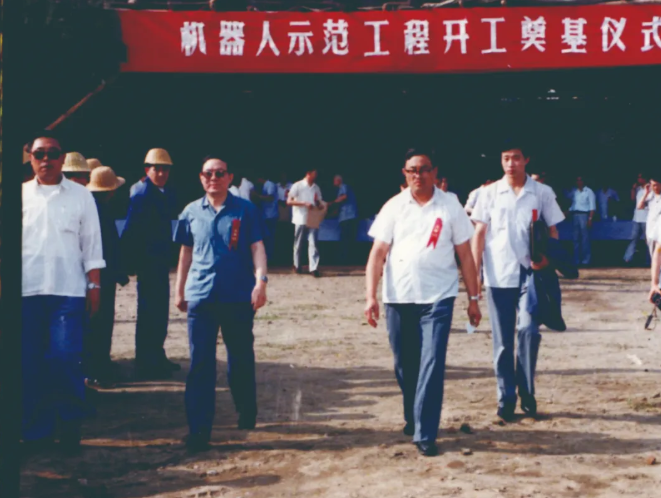
“Only working, not speaking” became his choice in adversity. Years later, some said Jiang was aloof and proud. Yet who could know that the hardships he had endured made him used to confronting everything with silence? But when it came to matters of the nation, Jiang was always the one who contributed the most.
In 1977, with the support of Ye Qiang, Director of the Shenyang Automation Institute, and Cao Huizhen from the Science and Technology Division, Jiang was sent to Beijing as one of the representatives of the institute to draft a development plan for the automation discipline.
“Robots will be the representative high technology of the 21st century. If we lose our scientific and technological advantage in this field, we may lose an entire era.” Inside the conference room of the National Planning Conference on Natural Science Disciplines, the once eloquent and quick-witted Jiang Xinsong had returned. For in every sleepless night of the past, Jiang had never stopped thinking. More importantly, these words had been suppressed in his heart for far too long.
In 1958, the world’s first industrial robot, Unimate, was born in the United States. Its appearance completely changed the processes of modern industry and automobile manufacturing. But in China, industrial robots found it extremely difficult to obtain a “pass.” As early as the early 1970s, Jiang and two other scientists from the Shenyang Automation Institute—Wu Jixian and Tan Dalong—carried with them a report entitled On Artificial Intelligence and Robots, seeking support everywhere. They were the sentinels of their era, worried that if China did not act soon, it would be too late. Yet at that time, they faced much resistance.“What is a robot?” “If robots become people, wouldn’t that be absurd?” “Robots are not even understood yet, and you already want to build them? Daydreaming!” Such doubts inevitably left the three scientists somewhat disheartened.
Now, Jiang finally welcomed the great opportunity to restart the plan. Fortunately, this idea gained strong support from several leading scientists in the field of automation, including Tu Shancheng, Yang Jiachi, Wang Daheng, and Song Jian. The robot development project was officially included in the 1978–1985 Development Plan for Automation Science.
Since the birth of the world’s first industrial robot, the relationship between humans and robots had always been fraught with tension. In China at the time, people worried: would robots steal jobs from humans? To break the deadlock in China’s robot development, a new path had to be found. Jiang proposed developing robots tailored to China’s national conditions—robots designed to work in special extreme environments, performing tasks humans could not carry out. “Director Jiang often said that when making strategic plans, one must compare among multiple possibilities, judge the timing and circumstances, and determine the goal based on needs and conditions.” Ji Shenzhi, who had worked with Jiang for many years and once served as director of the Science and Technology Division, recalled this. It was both a bold innovation and a strategic detour. And such thinking was inseparable from Jiang’s emphasis on scientific intelligence and information.
In the 1970s and 1980s, robot research was booming across the world, and international progress in developing special robots for extreme working conditions continued to advance—for example, robots for nuclear power plants, for firefighting and disaster relief, and underwater robots. During a study trip to Japan, Jiang accidentally came across a piece of news: Britain was using underwater robots in the development of North Sea oilfields, performing seabed exploration, wellhead monitoring, oil pipeline radiation, and potential measurements, with excellent results. Immediately, Jiang thought of the abundant oil and gas reserves discovered in the South China Sea, which held promising prospects for development.
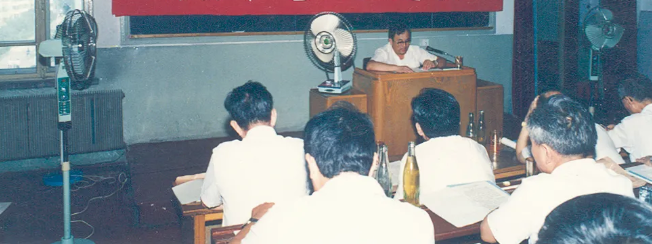
“If we can also develop underwater robots, then China’s pace in developing the oceans will be greatly accelerated. Its importance is no less than rockets and satellites in space.” Jiang decided—start with underwater robots! But some ridiculed him: “Old Jiang, it seems even a landlubber like you wants to go underwater!” Jiang was unfazed by the mockery.
In 1981, Jiang knocked on the office door of Li Xun, Director of the Department of Technical Sciences at the Chinese Academy of Sciences and an academician, to report his plan to research underwater robots. Li Xun was not only a highly respected scientist but also Jiang’s mentor, well aware of this middle-aged scientist’s wisdom and resolve. Yet even so, he was still shocked by the idea. “Perhaps first organize a national evaluation conference of robot experts in Shenyang,” Li suggested cautiously, urging Jiang to prepare quickly.
In 1983, underwater robots were included in the key research projects of the Sixth Five-Year Plan of the Chinese Academy of Sciences. Three years later, in the South China Sea, the “Hai Ren No.1” underwater robot—China’s first underwater robot prototype, developed under Jiang’s leadership at the Shenyang Automation Institute—successfully passed trials. This was the first major barrier Jiang broke through in robot research.
For this day, Jiang risked his life. In 1984, he led a team to the United States and Canada to investigate the production and application of underwater robots. In just three weeks, they visited 28 organizations in more than ten cities. Their investigations were like special forces operations: researching during the day, writing reports at night. After returning, Jiang fainted many times. Suffering from hyperthyroidism, he overdosed on medication to avoid delaying key negotiations, which caused poisoning and left him critically ill. Only surgery saved his life.
In August 1979, Jiang led a team of experts to Japan to attend the First International Symposium on Artificial Intelligence. They hoped to use this opportunity to deeply study the development and application of Japanese robots.
At that time, Japan had already built itself into a “kingdom of robots” on the foundation of its automobile industry, which became a key factor in Japan’s economic rise. But when Jiang proposed to purchase a robot, a technical director of a well-known Japanese company arrogantly refused: “For the next fifteen years, we do not intend to cooperate with China in any way on robots. The reason is simple—even if we sell robots to you, you won’t know how to use them!”
Shortly after returning, Jiang was appointed Director of the Shenyang Automation Institute. He was determined to restore dignity to China’s national industry and quickly began research and prototyping of industrial robots. “For a research institute, research direction is most important. But I oppose discussing direction only in theory. Direction is achieved through doing, not by talking. The key is to do—if you don’t do, you have nothing.”
In 1982, Jiang, together with experts Song Kewei and Zhou Guobin, successfully developed China’s first industrial robot—the SZJ-1 teaching and playback manipulator prototype. It passed expert appraisal, achieving an advanced level in China, and its performance indicators were close to those of the foreign Unimate-200 teaching and playback robot.
At a time when almost no one in China even knew what an industrial robot looked like, this robot completely opened the eyes of the Chinese people!
At the beginning of the 1980s, Jiang, always forward-thinking, not only considered establishing robot research projects but also envisioned something even greater. He hoped to build an open robot research and engineering testing base, serving both the whole nation and the world.
Silent and taciturn devotion to research is often seen as the innate nature of scientists. Yet throughout the history of great scientific projects, successful persuasion has almost always been indispensable—for in the end, all scientific decisions are made by people. Jiang was an outstanding “persuader.” He boldly promoted himself, advertised his ideas, and often encouraged researchers to fight for opportunities: “If you don’t even have the courage to compete, how can you possibly do good work?”
To secure the establishment of the Robot Demonstration Project in Shenyang, Jiang and his colleagues went through numerous twists and turns. The Shenyang Automation Institute had been one of the earliest units in China to conduct research on AI and robots. It had not only gathered a group of the nation’s best robot experts but also produced several research that filled domestic gaps. With such confidence, Jiang and Zhou Guobin took the initiative. Beginning in April 1983, for a whole year, they visited more than ten ministries and commissions and over twenty provinces, launching a massive feasibility study and promotional campaign, actively seeking support.
During that period, because there were too many research departments involved, the workload was heavy, and the difficulties enormous, Jiang Xinsong rose early and worked late every day, going from street to street and alley to alley. Even though he sometimes carried more than dozens of kilograms of documents on his back, since he had no money in his pocket, he could only squeeze into crowded public buses each time. He never took a taxi—he had no money for taxis. He suffered from hyperthyroidism, and once, due to exhaustion, he squatted at the entrance of the Beijing subway for more than an hour. When he felt a little better, he stood up again, carrying the heavy files on his back, and continued on his way. Later, Zhou Guobin, the chief designer of the National Robot Demonstration Project, recalled this episode with deep admiration.

Jiang Xinsong entered every door he could. Once he set his sights on someone, he would persistently “lock onto” that person. If one visit did not work, he would go a second time; if the second time did not succeed, then a third, a fourth. As long as the other party gave him a chance, he would patiently and earnestly explain the situation and make his report.
Many intellectuals valued face and dignity above all else, but for Jiang Xinsong, such things did not matter. He had endured the harshest storms faced by his generation of intellectuals; his inner being had long been forged into steel. Back then, when surrounded by indifference, he calmly said: “As long as I am allowed to work for the country, I ask for nothing else.” And today, he still held to the same belief.
As for how to persuade others, Jiang Xinsong had his own “strategy.” Especially when dealing with leaders who were not professionally versed in his field, he not only clarified the project’s value, role, and significance, but also meticulously explained technical matters until the listener understood. “Once people truly understand and realize, they may support you.” Ji Shenzhi once received “personal teaching” from Jiang Xinsong: First, one must gather as much information as possible on the global frontiers; second, one must describe the actual needs vividly and authentically; third, when writing about feasibility, it is equally important to write about difficulties—one must stand on the national perspective, proactively unite even potential rivals, and let the supervising departments see our capabilities, potential, and vision; fourth, one must distill a few points or phrases that shine with originality, so as to immediately capture attention.
Jiang Xinsong was also a true “perfectionist in details.” Ji Shenzhi recalled that in order to achieve the best audiovisual effect when reporting, Jiang even determined the number of lines, font size, and colors of his PPT slides based on the size of the lecture hall and the distance to the audience. Later, Ji summarized these experiences and published them in the institute’s bulletin. His colleagues regarded them as treasures, marveling at Jiang’s relentless pursuit of perfection.
On July 9, 1986, the National Robot Demonstration Project officially broke ground. At that time, it was the largest robot demonstration center in Asia, with a total investment of 50 million yuan, of which 5.9 million U.S. dollars in foreign exchange was used solely for purchasing scientific research equipment. This figure was astronomical at the time, comparable to today’s mega-science projects. Not long after the project commenced, Jiang Xinsong, as its leader, once again found himself lying on a hospital bed. Some colleagues advised him not to work so desperately, but he replied: “My time and life were once delayed for twenty years. Now, what remains is no longer much. Besides giving my all, do I have any other choice? Therefore, ‘work while alive, and if I die, so be it’ has become my basic principle.”
In a letter to a friend, he wrote: “My goal is to find a way that, by the 2020s of the next century, our country’s 400,000 enterprises (medium and large) can connect with the world and stand on the global stage of market competition.”
His concern for the nation and his ambition for rejuvenation leapt off the page. Anyone who had interacted with Jiang Xinsong knew that he was strict and domineering. Sometimes his strictness seemed inhuman, and his domineering manner brooked no contradiction.
No man is perfect. What was most precious about him was that he was honest and incorruptible, steadfast and pragmatic in handling affairs, never resorting to falsehood. Everything he did was for the nation, his heart selfless and vast as heaven and earth. “That is why he won the support of the workers, why so many people voluntarily followed him with the spirit of ‘work while alive, and if I die, so be it,’ and why he earned the trust and respect of many leaders in the scientific community,” said Ji Shenzhi.
“This is the power of wisdom, the power of action, the power of character!”

